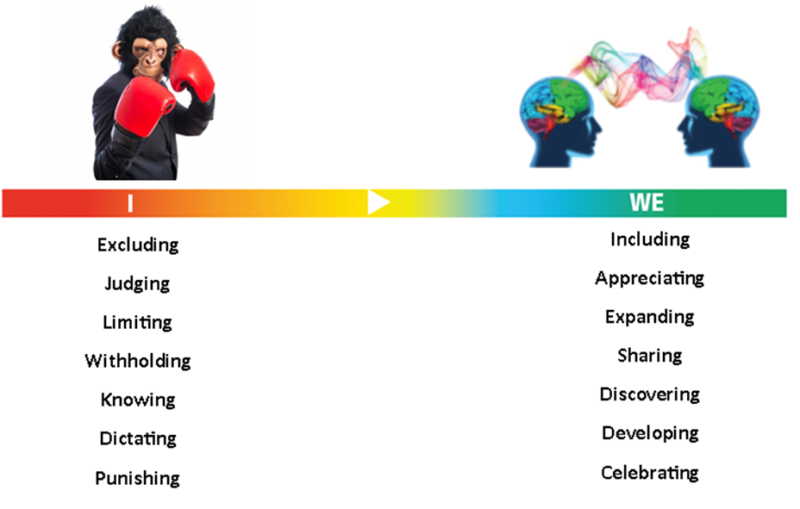Steve Peters in his widely read book the Chimp Paradox invites us to appreciate our limbic brains as our “chimp” – our emotional, instinctive brain, responsible for our emotions, instincts and survival responses. Whilst, as Steve recounts, our “chimp” reacts quickly, often irrationally, is driven by fear, aggression and indeed the desire for reward, it is also able (thankfully!) to accurately assess our environment including the intentions of others with remarkable accuracy, using minimal information.
We use this information (processed outside our awareness) to respond and react to what we perceive as the intentions of others, nano-second by nano-second in our waking and, to an extent, in our sleeping.
Highly Attuned
What is less known is that our “chimp” is amazingly adept at assessing the intentions of others, not only through what people communicate to us through body language, tone of voice and what they say, but also in what we learn and interpret from their text (prose, emails, text messages etc).
Recent neuroscience research written up by the late Judith E Glaser of the CreatingWE Institute demonstrates how our “chimp” becomes primed to look-out for particular words and phrases that are highly likely to trigger negative / defensive emotions, equally, words and phrases that are likely to trigger positive emotional states – ones that better lead to connection, engagement and success.
Take a look at the table below – as Judith explains, when we experience the states in the “I” column, we enrage our “chimp” – triggering negative / defensive emotional states, when we experience the opposite states in the “We” column, we chill our “chimp” – promoting collaborative, connection based, supportive and positive emotional states:

What are you communicating in your emails?
Now – here’s the thing! Think about a recent email you’ve sent to colleagues. Consider what your words have inadvertently communicated based on the list above! Have you communicated “we” states or, inadvertently, “I” states??
Take these two simple invitations to a meeting to discuss a project:
A) “I need to you join me on Wednesday at 10am so that I can brief you on the project plan I’ve created. – I’ve set out a list of what I need you to be responsible for and a proposed timeline / set of deadlines”
B) “Can you join me on Wednesday at 10am for a meeting to discuss the draft project plan which I’ve created. I’d really value your input, thoughts and ideas on a draft set of responsibilities and potential time line / set of deadlines. Your contribution is crucial here and I want to ensure that the final plan is one you’re able to commit to and deliver against. Looking forward to seeing you on Wednesday!”
Setting the meeting up for success of failure?
In A) above – the reader’s “chimp” is very likely to perceive dictating, probably some knowing and a bit of limiting – the reader is highly likely to turn up to the meeting already in a defensive / protect mindset – primed by the written invitation – all happening outside their conscious awareness! At the very least, their “chimp” will be looking out for evidence to substantiate the assumptions drawn from the email.
In B) above, however, the reader’s “chimp” is very likely to perceive something rather different – developing, discovering, sharing, expanding, including – primed by the subtly different written invitation! Their “chimp” is much more likely to feel chilled, open and ready to engage in co-creating the project plan.
Prime for Success
The great news here is that by taking a more careful approach to what we write, as well as what we say, we can prime our future interactions for success – setting the emotional tone well ahead of the actual interaction. Where our “chimp” starts off with positive emotional states, as positive pschology reminds us, we notice more of the positives, which further builds the chances of great interactions and outcomes!
Enjoy and experiment with this – and do join the conversation and share what you notice. Our thanks to the CreatingWE Institute, Conversational Intelligence for Coaches whose research this post is drawn from.

Leave a Reply
You must be logged in to post a comment.